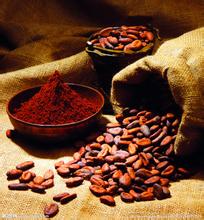Kenya Jinchu Valley Coffee Flavor Taste Manor Production Characteristics Boutique Coffee Bean Introduction
Purple-breasted Buddha Dharma monk (Coracias caudatus) with blue and green plumage
Kenya's national bird, purple breast, Buddha and monk.
Kenya's national bird, purple breast, Buddha and monk.
The chest is purplish red, bright and beautiful, feeding on insects. Avian class\ Buddhist monk order\ Buddhist monk family\ Buddhist monk genus. Woodland and prairie of sub-Saharan Africa and southern Arabian Peninsula, the national bird of Kenya and Botswana. The name of the Buddhist monk comes from Japan, and the feathers are very gorgeous.
National flower
Kenya, which is located on the equatorial line, has a
There is a famous equatorial snow mountain, Mount Kenya, on which grows a famous orchid, which is the national flower of modern Kenya-Kenyan orchid. The leaves of Kenshan orchid are wide and thick, like bands carved by the king of blue. The petite and white flower is composed of six oval petals, and there is a charming little red dot in the center of the flower, which is composed of dozens of small flowers on a long inflorescence, with neat red hearts and small white flowers arranged on both sides, drooping slightly, showing the unique charm of Kenshan orchid.
Political editor
Regime
Kenya maintains a presidential system of government. Since independence, the Kenyan League has been in power for a long time. After changing to a multi-party system in 1991, the Kenyan League won two consecutive multi-party elections in 1992 and 1997, and Moi was re-elected president. In the third multi-party general election held in December 2002, the opposition coalition National Rainbow Alliance (all League) defeated the Kenya League, Kibaki was elected president, and the League won a majority of seats in parliament. After the general election in December 2007, national riots were caused by disputes over the election results between the ruling National Unity Party and the opposition Orange Democratic Movement. Under the mediation of former UN Secretary General Kofi Annan, the two parties to the dispute signed the Agreement on the principles of Partnership of the Coalition Government on February 28, 2008 and formed a coalition government on April 13. The leader of the ruling party, Mwai Kibaki, is president, and the leader of the opposition, Odinga, is the new prime minister. In March 2013, Kenya held a new general election, "Jubilee Alliance" candidate Kenyatta defeated the "Alliance for Reform and Democracy" candidate Odinga, was elected the fourth president of Kenya. On April 9, Kenyatta was sworn in
Kenya Kenya is bordered to the north by Ethiopia, the origin of Arabica coffee trees, but it was not until the beginning of the 20th century that coffee cultivation began. In the 19th century, missionaries introduced Arabica trees from the leaves, but did not plant them in large quantities. It was not until 1893, when the ancient Brazilian bourbon seeds were introduced, that coffee was cultivated on a large scale. That is to say, the current Kenya Kenyan coffee is of Brazilian origin. Due to differences in water, climate and handling, the taste of Kenya Kenyan beans is very different from that of Brazilian beans. Brazilian coffee is planted at a low altitude, with soft texture and no obvious sour taste. In contrast, Kenyan coffee trees are mainly concentrated on the slopes near Mount Kenya, about 4 to 6500 feet above sea level. This height is the most suitable for coffee beans to develop their flavor, because the mountain temperature is lower, the growth is slower, and the aromatic components of coffee beans are fully developed. the acidity of the fruit is more obvious and the texture is harder. In addition, Kenya was an early British colony, and the British had established a set of perfect cultivation and quality control system. After the independence of Kenya, the coffee industry has made great strides on the existing basis, and has become the largest foreign exchange earning industry in Kenya. Kenya there are two types of coffee farms in Kenya. One is a large plantation covering an area of more than five acres, but the average elevation is low. In the case of Kenyan Coffee, the coffee beans of the large farms are of medium quality. The best Kenya beans come from small farms, most of which are located in the foothills or volcanic slopes above 5,000 to 6,000 feet. Each small farmer has a capacity of only 20 to 70 bags per season and is unable to invest in expensive washing plants, but small farmers are very United. Hundreds or thousands of households are gathered to set up cooperative farms, and the government pays for the construction of washing treatment plants, and the coffee fruits picked by small farmers are sent to cooperative farms for unified processing. First remove the half-ripe or rotten fruit, then peel, ferment, decompose the flesh, remove the coffee beans, then dry and polish, the whole process is supervised by the official Coffee Administration, which ensures the quality of Kenyan coffee. Kenya bean washing processing technology and high standards of quality control, has always been an example of bean-producing countries. Don't underestimate the small farmers in Kenya, they are just like ants and soldiers, and their overall production capacity is higher than that of large farms, about six to four, which is quite rare in bean-producing countries. Kenyan coffee is widely appreciated by connoisseurs, thanks in large part to small farmers guarding the foothills in order to grow high-quality coffee. In addition, Kenya beans must have a strict grading system. Coffee beans taken out by washing plants are divided into seven grades according to size, shape and hardness, the highest is AA or AA+, followed by AB, PB, C, TT, T. This grading system is similar to Colombia, mainly in terms of particle size and shape, but it does not necessarily have the best flavor. This is what coffee fans should know.

Important Notice :
前街咖啡 FrontStreet Coffee has moved to new addredd:
FrontStreet Coffee Address: 315,Donghua East Road,GuangZhou
Tel:020 38364473
- Prev

Characteristics of Ecuadorian coffee beans Ecuadorian coffee manor
The Arabian Coffee Tree was first introduced to Ecuador in 1952 and its coffee is of good quality, especially the coffee harvested in early June. Ecuadorian coffee beans can be divided into two varieties: Galapagos and Gigante, both of which have the characteristics of large granules and heavy weight. Ecuadorian coffee can be divided into first class (No.1) and super excellent (Extra Superior) according to its quality.
- Next

Taste of Ugandan coffee beans Ugandan coffee in Uganda coffee producing area
Ugandan coffee beans have a unique flavor of delicate taste, which is very suitable for making Italian and other flavors of coffee. More importantly, Ugandan coffee beans are strictly screened according to the standards of the international market to ensure their high quality and pollution-free characteristics. Africa is the hometown of two major varieties of coffee, Arabica and Robusta, while the eastern Africa enjoys a plateau water hometown and a pearl of East Africa.
Related
- Detailed explanation of Jadeite planting Land in Panamanian Jadeite Manor introduction to the grading system of Jadeite competitive bidding, Red bid, Green bid and Rose Summer
- Story of Coffee planting in Brenka region of Costa Rica Stonehenge Manor anaerobic heavy honey treatment of flavor mouth
- What's on the barrel of Blue Mountain Coffee beans?
- Can American coffee also pull flowers? How to use hot American style to pull out a good-looking pattern?
- Can you make a cold extract with coffee beans? What is the right proportion for cold-extracted coffee formula?
- Indonesian PWN Gold Mandrine Coffee Origin Features Flavor How to Chong? Mandolin coffee is American.
- A brief introduction to the flavor characteristics of Brazilian yellow bourbon coffee beans
- What is the effect of different water quality on the flavor of cold-extracted coffee? What kind of water is best for brewing coffee?
- Why do you think of Rose Summer whenever you mention Panamanian coffee?
- Introduction to the characteristics of authentic blue mountain coffee bean producing areas? What is the CIB Coffee Authority in Jamaica?

